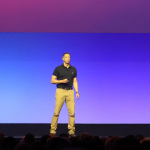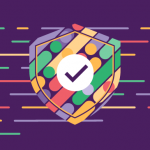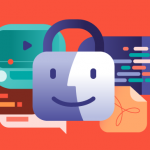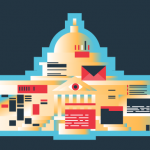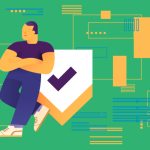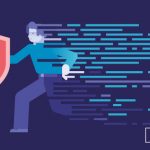
The number one concern for companies when developing new software and algorithms is that they do the job they are meant to do and function efficiently. Cybersecurity features, when implemented, are intended to ensure customer data security and guard against malicious process hijacking attacks. Source code is often left out of these security considerations, and its importance as proprietary information is overlooked. Data Loss Prevention (DLP) tools can help software developers combat source code leaks and theft by ensuring security policies that protect it are in place.
Sensitive data is most often associated with personally identifiable information (PII) or credit card numbers. These fall under the protection of data protection laws such as the EU General Data Protection Regulation (GDPR) and whose leakage can cause financial loss and reputational damage. When it comes to source code, inevitably, some competitors might develop similar products, but there is a marked difference between them having to do the groundwork themselves and simply following a company’s available code as their blueprint.
There is also the risk of source code being used by cybercriminals to exploit vulnerabilities or embed malware into existing software. PDFs, for example, can now contain malware because Adobe Acrobat had its source code stolen in 2013.
In the case of algorithms, such as those often used by trading companies to exploit opportunities on the market as soon as they appear, these rely on companies’ expertise and experience within their field and thus count as trade secrets.
The Vulnerability of Source Code
The simplest way source code can be leaked is through employee theft or negligence. Insider threats are at the heart of many data leaks: whether it is disgruntled employees feeling underappreciated or individuals leaving the company, they often have direct access to the source code and can easily transmit it, post it online, or copy it onto portable devices.
Third-party contractors are also a notable vulnerability. In today’s interconnected world, companies often rely on outside services to run or improve their software. By outsourcing projects, they trust other companies’ security measures to ensure source code protection. At the same time, they have no way of monitoring and ensuring the enforcement of non-disclosure agreements.
Many developers today incorporate open source software into their projects. Depending on the type of license used, this can mean that any software incorporating them must also adhere to open source policies. This means that, although companies are not obligated to post their source code publicly, they can be legally bound to provide it to individuals who request it.
How Data Loss Prevention Can Help
Data Loss Prevention (DLP) tools can prevent data breaches and data exfiltration through security controls that limit or block employees from copying source code into emails, transferring it via popular messaging apps, personal emails or file-sharing services, or uploading it to cloud storage services. They can also stop the copying of source code files onto removable devices such as USBs or external drives.
Source code detection in DLP often uses complex libraries to identify programming languages in over a hundred file types. These require in-depth knowledge to accurately differentiate between various programming languages, leading to heavyweight databases. DLP solutions such as Endpoint Protector have taken source code detection to the next level by implementing N-gram-based text categorization, which greatly improves the accuracy rate of source code detection, as much as 98% in the case of some programming languages.
By accurately identifying source code, DLP tools can more efficiently apply DLP policies created to manage, limit or block the transfer and use of source code in real-time.
In conclusion
Source code protection is essential for organizations looking to keep their software secure and their trade secrets safe. In the age of endless exploits, companies’ intellectual property often is as sought after as users’ personal data. There are always competitors and copycats eager to pay big money to see it as well as cybercriminals ready to use that knowledge to build more efficient software attacks. Companies, therefore, cannot ignore its importance and vulnerability and must ensure that source code is given the same level of protection as all its other sensitive data.
Frequently Asked Questions
Many easy to deploy measures provide the opportunity to significantly reduce the vulnerability level of your source code. Here are a few ones you can consider:
- Restrict user access: only hands-on, high-level personnel should be working with your source code
- Encryption and monitoring: make sure you have the ability to encrypt sensitive data both in transit and at rest, also, monitor your data at all times to be alerted when any kind of suspicious activity comes to light.
- Patents & copyright:make sure that all your software and coding is protected by copyright law and necessary patents
Learn more about DLP capabilities
DLP solutions provide IT administrators a 360-degree view of the location, flow and usage of data across the enterprise.
It checks network actions against your pre-defined organization’s security policies, and enables you to protect and control sensitive data, including customer information, personally identifiable information (PII), financial data and intellectual property.
With an in-depth understanding of this data, your organization can set the appropriate data policies to protect it and make risk-prioritized decisions about what assets need to be protected and at what cost.
Download our free ebook on
Data Loss Prevention Best Practices
Helping IT Managers, IT Administrators and data security staff understand the concept and purpose of DLP and how to easily implement it.

